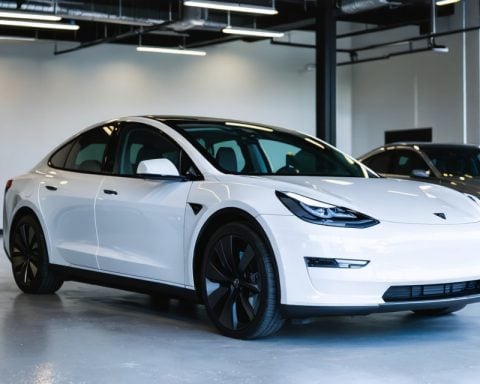- Akasol is closing its two plants in Hazel Park and Warren, Michigan, eliminating 188 jobs.
- Parent company BorgWarner shifts its focus to Seneca, South Carolina, for increased manufacturing efficiency.
- The closure reflects broader industry trends toward consolidation and relocation for efficient production.
- This move highlights the tension between global competitiveness and local economic stability.
- The closures prompt discussions on Michigan’s adaptability in the evolving electric vehicle landscape.
The heart of Michigan’s electric revolution dims as Akasol, the German battery powerhouse, plans to close its twin plants in Hazel Park and Warren. April marks the end, sweeping away 188 jobs and leaving a void in the local economy. The factories, long standing as beacons of innovation, now turn dark as Akasol’s parent company, BorgWarner, opts for a fresh start in Seneca, South Carolina.
With a shift in strategy, BorgWarner, a giant in automotive technology, realigns its focus, rippling through Michigan’s industrial fabric. Executives notified state officials and local leaders, adhering to the Worker Adjustment and Retraining Notification Act, which demands transparency when large employers close shop.
The plants, once alive with the hum of lithium-ion battery production, now stand quiet as BorgWarner steers its operations southward. This strategic pivot underscores a broader trend within the industry—a dance of consolidation and relocation in pursuit of efficient manufacturing.
Although the void left behind by these closures is undeniable, the broader narrative highlights the relentless march of global competitiveness. In Seneca, the existing facility beckons with promises of streamlined efficiency, encapsulating BorgWarner’s vision for the future.
For the affected workers and the communities anchoring these plants, the layoffs are not just numbers but a stark reminder of the delicate balance between progress and stability. As the dust settles, Michigan must grapple with redefining itself amid the ever-changing landscape of electric vehicle innovation.
The shuttering of Akasol’s plants not only alters Michigan’s industrial skyline but also ignites conversations about adaptability and resilience in a world leaning ever more on electrification.
This Major Plant Closure Signals a Bold New Direction for Electric Vehicle Production
How-To Steps & Life Hacks
– Adapt to Industry Changes: For communities affected by such closures, investing in retraining programs for workers can be beneficial. Potential life hacks include leveraging online learning platforms like Coursera or Udemy to gain skills in emerging areas such as renewable energy technology or project management.
– Leverage Local Resources: Look into local government incentivization programs aimed at boosting investments in green technologies and support ventures that can replace the economic activity lost due to the plant closures.
Real-World Use Cases
– Seneca’s Efficiency Goals: BorgWarner’s move to Seneca reflects a practicality-focused decision to enhance production efficiency. The consolidation aims to unify operations under one roof, reducing overhead costs.
– Electric Vehicle Adoption: With this shift, consumers may begin to see more affordable or technologically advanced electric vehicle components as these production efficiencies are realized.
Market Forecasts & Industry Trends
– Rising Demand for EVs: According to the International Energy Agency, global electric vehicle sales are expected to reach 145 million by 2030 as countries aim to meet climate goals. Companies like BorgWarner are preemptively positioning themselves to meet this demand with more streamlined operations.
– Shift to the Sun Belt: Industry trends toward lower-cost states in the U.S., such as South Carolina, highlight the Sun Belt’s attractiveness due to lower labor costs, tax incentives, and close proximity to key transport hubs.
Reviews & Comparisons
– BorgWarner’s Strategic Moves: Compared to its competitors, BorgWarner’s decision to consolidate aligns with similar strategies seen in major players like Tesla and General Motors, which have also focused on concentrated and efficient production processes.
Controversies & Limitations
– Economic Impact: The closure of Michigan plants brings up concerns related to job losses and economic ramifications for local communities. BorgWarner’s relocation strategy underscores challenges in balancing global operational efficiency with local economic impacts.
Features, Specs & Pricing
– Enhanced Production Capabilities: The new facility in Seneca is expected to harness state-of-the-art technology, potentially improving the performance and cost-efficiency of lithium-ion batteries produced.
Security & Sustainability
– Sustainability Commitment: BorgWarner emphasizes sustainability by planning eco-friendly aspects in its manufacturing processes. However, the challenge remains to ensure these are effectively implemented in the new facility.
Insights & Predictions
– Adaptation and Resilience: Michigan must focus on attracting fresh investments in clean energy sectors to fill the void left by the plant closures.
– EV Sector Expansion: BorgWarner’s move signifies a likely increase in production capacity and technological advancement in the EV industry, catering to the burgeoning market needs.
Tutorials & Compatibility
– For individuals looking to transition careers, learning platforms such as LinkedIn Learning can provide courses in electric vehicle technology, offering a path to stay relevant in the evolving technology landscape.
Pros & Cons Overview
– Pros: Increased efficiency and potentially lower costs for EV components; likely technological advancements due to centralized operations.
– Cons: Job losses in Michigan; economic impact on local communities dependent on the plants.
Actionable Recommendations
– Immediate Courses of Action:
– Affected workers should take advantage of retraining opportunities in emerging fields.
– Communities should proactively seek new green technology investments.
Quick Tips
– Community Development: Local governments can encourage small business growth in tech sectors to diversify their local economies.
– Individual Growth: Engage in continuous learning to remain adaptable in a rapidly changing industrial landscape.
For more industry insights, visit IEA and LinkedIn for learning resources.













